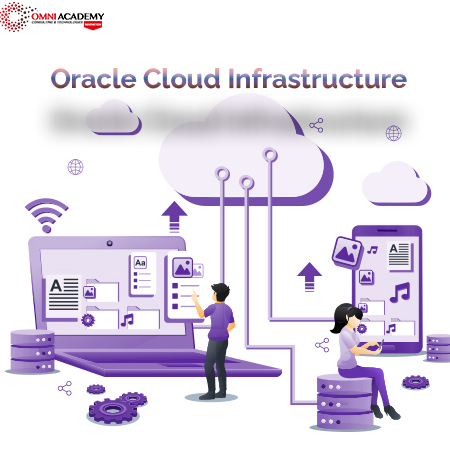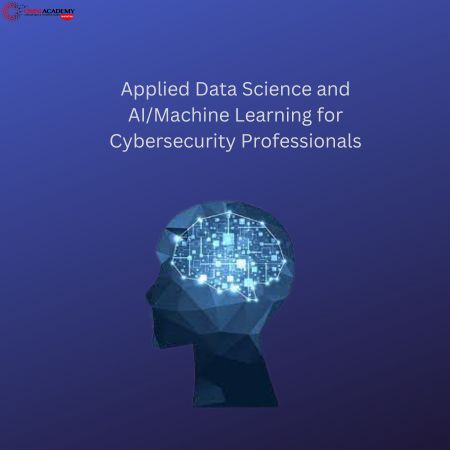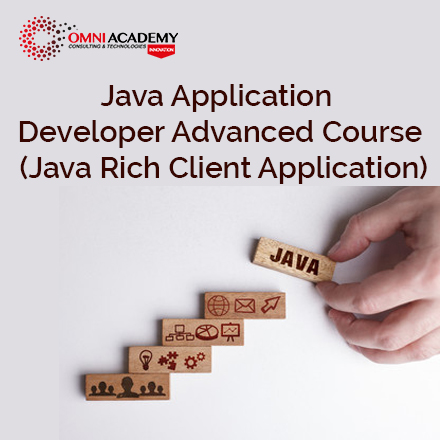Oracle Application Development Framework 11g – ADF
The Oracle Application Development Framework 11g Implementation Specialist Certification identifies professionals that are skilled in implementing solutions based on Oracle Fusion technologies, with a skill focus on using Oracle ADF and JDeveloper. The certification covers skills such as: building the data model using ADF Business Components, planning and implementing a user interface with ADF Faces, defining Task Flows, implementing application security, exposing ADF components for use in SOA (BPEL) processes, and implementing data binding controls. The exam targets the intermediate-level to advanced-level implementation team member. Up-to-date training and field experience are highly recommended[/vc_column_text]
Introduction to Fusion and ADF
- Describe Fusion Architecture
- Explain how ADF fits into the Fusion architecture
- Describe the ADF technology stack (MVC)
- Identify sources of additional information about ADF and ADF Business Components
Getting Started with JDeveloper
- Describe benefits that JDeveloper provides for application development
- Utilize common IDE mechanisms when developing and testing components
- Set IDE preferences based on user requirements
- Initiate the creation of empty applications, projects, and connections in JDeveloper
Building a Data Model with ADF Business Components
- Describe the role of ADF Business Components in building a business service
- Explain the architecture of ADF BC
- Identify the types of components that cooperate to provide the business service implementation
- Explain how ADF BC components are used in a Web Application
Querying and Persisting Data
- Describe the characteristics of an ADF BC view object
- Create a view object that can be used for performing a query in a Web application
- Define a SQL statement on which to base a query for a view object
- Explain how entity objects relate to database tables
- Describe the persistence mechanism of entity objects
- Use the Create Entity Object wizard to generate entity objects from database tables
- Create associations between entity objects to represent business relationships
- Create updatable view objects based on entity objects
- Link view objects to one another in a master-detail hierarchy
- Refactor objects in an application
Exposing Data to Clients
- Explain the role of application modules
- Describe the characteristics of application modules
- Use the Create Application Module wizard to define the data model for an application module
- Explain how application modules can manage business components transactions
- Explain how application modules can manage application stateE
- Explain the role of the ADF Model
Declaratively Customizing Data Services
- Declaratively change data behaviour
- Declaratively modify the default behavior of view objects, entity objects, and application modules
- Define a view accessor for a list of values(LOV)
- Define a list of values (LOV) for an attribute
Programmatically Customizing Data Services
- Generate Java classes for business components to modify default behavior programmatically
- Override class methods to change or augment default behavior
- Modify the WHERE clause of a view object at run time
- Explain the benefits of adding service methods at the application module level (rather than at the view level)
- Create a test client for testing your custom code
- Modify a view object’s client code to add a new employee to the employees view object
Validating User Input
- Describe the types of validation available for ADF applications
- Evaluate which validation options are appropriate for different validations
- Add declarative validation for an entity object
- Identify the other non-declarative validation options and when they might be used
- Describe the benefits of using domains for validation
Troubleshooting ADF BC Applications
- Identify the JDeveloper tools for logging and diagnostics
- Use Java code auditing tools
- Make use of FileMon and Junit to debug an application
- Use the J Developer profiler
- Use the J Developer debugger
- Identify sources of Help
Understanding UI Technologies
- Describe the use of Web browsers and HTML
- Explain how Java has come into widespread use as a language for developing Web applications
- Describe the function of Servlets and JSPs
- Define JavaServer Faces
- Explain the JSF component architecture
- Expalin some JSF component types included in the standard implementation
- Describe the purpose of backing beans
- Describe the JSF life cycle
- Explain how ADF Faces augments the JSF life cycle
Binding UI Components to Data
- Create an empty JSF page
- Use three different ways to add ADF Faces UI components to a page
- Describe the types of data-bound components that can be added to a JSF page
- Describe the structure of an EL (Expression Language) expression
Planning the User Interface
- Describe the Model-View-Controller design pattern
- Differentiate between bounded and unbounded task flows
- Create task flows to define control flow in an application
- Specify control flow rules
- Define global navigation
- Use routers to declaratively route control flow to activities based on an EL expression
- Define the role of managed beans in task flows
- Explain the types of validation available in the user interface
Adding Functionality to Pages
- Internationalize the user interface so that the application can be used in multiple locales
- Use component facets to specify subordinate elements such as toolbars, headers and footers
- Implement a list of values (LOV) to enable users to select a value from a list
- Add a calendar component to an input date field to make it easy for users to select a date
- Use the table component to display structured data as a formatted table
- Employ the tree component to display hierarchical data
- Add icons and images to an application with ADF Faces output componentsE
- Create Search forms using the ADF query component
- Use ADF Data Visualization components to add charts, graphs, map etc to your JSF pages
Implementing Navigation on Pages
- Implement command buttons and links
- Create menus – Menu bar
- Create menus – Popup
- Create menus – Context
- Use a navigation page
- Use breadcrumbs
- Create trains
Achieving the Required Layout
- Build complex page layouts with layout components
- Explain the role of ADF Faces skins
- Use dynamic page layout
Ensuring Reusability
- Identify the benefits of reusing components
- Create a resource catalog to enable sharing of resources within and across teams and applications
- Create ADF libraries to share components within and across teams and applications
- Create a task flow template for reuse across different bounded task flows
- Create a page template for reuse across the JSF pages in an application to enable a consistent look and feel
- Create a declarative component for reuse in different pages of an application
- Create a page fragment to use in multiple pages of the application
- Employ a bounded task flow as a region in a JSF page
Passing Values between UI Elements
- Evaluate whether the data model contains opportunities to reduce the need for passing values between pages
- Use a managed bean to pass values between JSF pages
- Store values in memory-scoped attributes to hold and pass information between pages and life cycle phases
- Use parameters to pass information to different parts of the application
Responding to Application Events
- Configure managed beans to contain code to respond to events
- Explain the different types of events
- Use phase listeners to listen for and respond to events
- Explain the role of an event listener
- Use action listeners
- Describe the sequence in which events and listeners are executed
- Describe the features of JDeveloper that support ADF Faces enhanced event handling
- Identify the server events fired by ADF Faces components/span
- Use the contextual events framework to co-ordinate regions on a JSF page
Implementing Transactional Capabilities
- Explain ADF BC transaction handling
- Enable an ADF bounded task flow to run as a transaction
- Manage transaction exceptions on ADF bounded or unbounded task flows
- Define the response to the browser’s Back button (for an ADF task flow that was already exited)
- Implement Save for Later functionality
Implementing Security in ADF BC Applications
- Explain the need to secure applications
- Describe security aspects of an ADF BC application
- Add ADF Security Authentication to an application
- Add ADF Security Authorization to an application
- Use two approaches for granting users access to resources
- Prevent unauthorised access to the ADF BC Model
- Explain the types of application authentication at run time
- Use Expression Language to extend the default security capabilities of the framework
Explore the Project Structure and Core File Architecture
- Define File Structure of a Project
- Examine how Metadata files are used to specify paramters, methods, and return values to a data control
- Define ADF Data Control and Databinding Files
- Explore the ADF Faces and Web Configuration Files to know where task flows, pages and code are created
- Define Hierarchical Relationship of the XML Metadata files in a Web Application
Extend the ADF Business Components Framework
- Examine some general considerations when using ADF Business Components
- Extend the ADF Business Components (ADF BC) Framework to customize your application
- Override the standard way data is committed to the database using a PL/SQL procedure
- Design ADF Business comonents to avoid database contraint
Use ADF Business Components for Validation, Calculations and List of Values
- Build Cascading List of Values
- Enhance the Application with Calculations and Validation
- Create Validation for Foreign Keys
- Employ Groovy Expressions in Validations
Use Inheritance in the Business Domain Layer
- Reuse existing Business Component designs by extending components
- Implement Supertype/Subtype designs using Entity Objects
- Create View Objects to access more than one table
ADF as a part of a Service Oriented Architecture
- Expose ADF Business Components as SDO for use in a SOA Process (BPEL)
- Create Rich User Interfaces that access data from a composite application
- Create events for ADF Business Components to trigger Enterprise Service Bus
- Use Service Data Objects to access heterogeneous data in a uniform way
Implement Data Binding Controls
- Define and Recognize ADF Model binding types
- Define ADF Model executables and how to use them
- Customize data-bound components within the page definition file to support application requirements
- Use Expression Language to connect page items to model components
- Determine how model components get transformed into Data Control Palette items
Practical Data Binding in Action
- Describe how data binding and the JavaServer Faces (JSF) page life cycle
- Define listeners and custom controllers to augment the ADFm life cycle
- Explain how the Application Development Framework (ADF) life cycle works
Work with Managed Beans and JavaServer Faces
- Define key JavaServer Faces (JSF) terms
- Describe the JSF Architecture with Application Development Framework (ADF)
- Differentiate between Managed and Backing Beans
- In a JSF page, create and reference a Managed Bean to perform a custom method
- Set and use Managed Properties to store and retrieve user login information
- Use context object classes to access application messages, work with the Servlet API or ADF specific funcationality
ADF Faces Advanced Features
- Examine AJAX and ADF
- Employ Partial Page Rendering (PPR) on a JSF Page
- Enhance a page by creating input and output items using ADF Components
- Use page, panel and splitter componentss to design and build a JSF page
- Develop UI shell templates to incorporate company standard behavours, look and feel
- Display numerical data using Data Visualization components and Active Data Services
Integrate with WebCenter
- Allow end users to perform runtime customization to their application pages
- Integrate ADF pages with Content Management systems to access file systems
- Add Web Center Services, like social networking and collaboration, to JSF/ADF pages
- Add reusable Portlets that provide dynamic view of data, into a JSF/ADF page
Customize the Application Look and Feel with Skins
- Use Firebug and Mozilla Developer Toolbar to build skins
- Explain how skin selectors work
- Build instance specific skins
- Develop a managed bean to change skin at runtime
Job Interview Preparation (Soft Skills Questions & Answers)
- Tough Open-Ended Job Interview Questions
- What to Wear for Best Job Interview Attire
- Job Interview Question- What are You Passionate About?
- How to Prepare for a Job Promotion Interview
Stay connected even when you’re apart
👬🏻Join our WhatsApp Channel – Get discount offers
🧮 500+ Free Certification Exam Practice Question and Answers
Internships, Freelance and Full-Time Work opportunities
👫🏻 Join Internships and Referral Program (click for details)
👫🏻 Work as Freelancer or Full-Time Employee (click for details)
Flexible Class Options
- Week End Classes For Professionals SAT | SUN
- Corporate Group Trainings Available
- Online Classes – Live Virtual Class (L.V.C), Online Training
Related Courses
Oracle Techno Functional Consultant – Oracle Apps R12
Oracle APEX – Application Express
Oracle SOA Suite 11g – Essentials
Oracle Database 12c R2: Administration Workshop
Oracle Application Development Framework 11g – ADF
Oracle WebLogic Server 12c Administration
Oracle Forms Developer Course – Build Internet Applications






